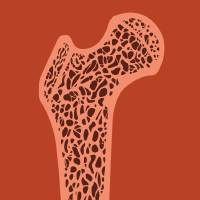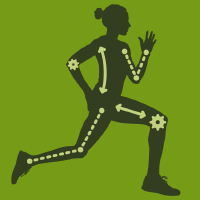Topic Menu
► Topic MenuTopic Editors



Trends and Prospects in Biomechanics
Topic Information
Dear Colleagues,
The achievement of voluntary human movement, whilst seemingly simple, is a rather considerably complex complex mechanism which allows many nerve structures to make decisional and/or reflexional choices. This mechanism "defines" and "controls" the movement through the nerve impulses intended for the musculoskeletal system. In the human body, more than 600 muscles are involved with 200 bones rigidifying more than 70 segments ranging from a few cm3 to several thousand cm3 through more than 100 joints. The whole system thus allows greater than 100 degrees of freedom. Biomechanics study the complexity of the human body through its behavior and performance in daily life with the respect to its musculoskeletal behavior and optimization. This discipline seems essential in today's world and considerably promising for the future. Indeed, the concepts, methods, and analytical techniques that we use to characterize human mechanics represent major economical stakes. The development of this discipline is necessarily inscribed in a vision of interactions between the physical sciences (metrology, complex mechanical and electronic systems), information sciences and technologies, and life sciences (materials, tissues, organs and limbs). The ambition of the research work carried out in biomechanics is to improve the performance of high-level athletes, the comfort and quality of life of patients, and to minimize stress on joints in real field or laboratory situations.
Biomechanics is subdivided into kinematic and kinetic analysis. Kinematics is concerned with the analysis of motion (e.g., to determine the forces applied to a joint from the inverse dynamics) while kinetics studies the forces that cause or result from it (e.g., the reaction of the ground when walking). Different models can be considered, ranging from the human body represented by its center of gravity to the model integrating both the motor control and musculoskeletal modeling of the human body. The complexity of the model required aims to replace what is complicated and visible with what is simpler and invisible, which depends on the aims of the analysis but also on the nature of the approach: kinematic or kinetic. With current medical techniques (Scanner, MRI and X-ray) and recent computer modeling, many technical and scientific advances are now possible in biomechanics. The aim is to mathematically model and simulate the mechanical behavior of the human body under the application of various constraints. While it is correlated with cases of declared pathologies, we consider behavioral control with the objective of prevention. This simulation will make it possible to predict the appearance of pathologies that may slow down the stability or progression of human mechanics in all fields combined. The recommendations will be applicable to optimize human mechanics. It is important to note that the mathematical modeling in Life Sciences or Medical Sciences is hardly developed. This modeling involves applying physical laws to analyze both human and animal movements and to quantify and analyze the discriminating parameters of movement. Given its very complex approach, "skeletal" modeling consists of representing the body by a certain number of segments (often considered undeformable to simplify calculations). The interest of this modeling lies in the possibility of combining and coordinating research. This results in an efficient way in innovative projects to achieve CAD simulation rapid prototyping.
Applications will be in medicine (e.g., the development of new orthotics) and in sport (e.g., proposing a methodology for optimizing sports clothing). In brief, biomechanical tools and methods permit to quantify and improve the discriminating parameters characterizing movement in different cases such as sports, work and patients’ daily lives. The aim of this Special Issue is to effectively combine and coordinate biomechanical research and results in order to understand and improve human mechanics in medicine, sport, and at work.
Prof. Dr. Redha TaiarProf. Dr. Yuri Ivanenko
Dr. João R. Vaz
Topic Editors
Keywords
- quality of life
- rehabilitation
- health
- sport performance
- sport science
- mechanical analyses of sports
- sport medicine
- gait and posture
- injury biomechanics
- musculoskeletal and neuromuscular biomechanics
- human behavior
- musculoskeletal disorders
- ergonomy science
Participating Journals
| Journal Name | Impact Factor | CiteScore | Launched Year | First Decision (median) | APC |
|---|---|---|---|---|---|

Applied Sciences
|
2.7 | 4.5 | 2011 | 16.9 Days | CHF 2400 |

Osteology
|
- | - | 2021 | 24 Days | CHF 1000 |

Journal of Clinical Medicine
|
3.9 | 5.4 | 2012 | 17.9 Days | CHF 2600 |

International Journal of Environmental Research and Public Health
|
- | 5.4 | 2004 | 29.6 Days | CHF 2500 |

Biomechanics
|
- | - | 2021 | 23.8 Days | CHF 1000 |

MDPI Topics is cooperating with Preprints.org and has built a direct connection between MDPI journals and Preprints.org. Authors are encouraged to enjoy the benefits by posting a preprint at Preprints.org prior to publication:
- Immediately share your ideas ahead of publication and establish your research priority;
- Protect your idea from being stolen with this time-stamped preprint article;
- Enhance the exposure and impact of your research;
- Receive feedback from your peers in advance;
- Have it indexed in Web of Science (Preprint Citation Index), Google Scholar, Crossref, SHARE, PrePubMed, Scilit and Europe PMC.

